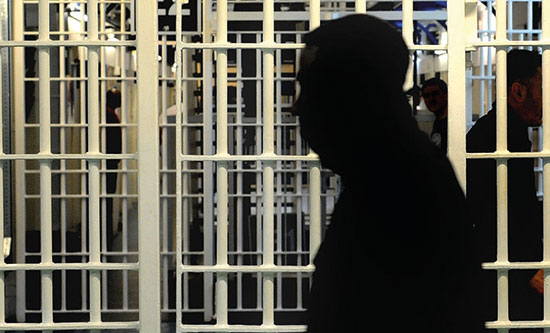The highly publicised assault on prison guards by a Muslim prisoner at Frankland prison in Durham on 12 April provoked the usual vengeful reaction from the Prison Officers Association (POA), which has vocally demanded the arming of prison staff with electronic stun guns and the enforcement of ‘supermax’ regimes in which prisoners would only be allowed to leave their cells when handcuffed and escorted by gangs of guards. Without waiting for formal agreement from the government for increased restrictions, under pressure from the POA, the management of high security prisons immediately began ramping up repression still further. JOHN BOWDEN reports.
Seizing on the Frankland attack, the POA began hyping up its longstanding drive to be armed with stun-guns, pepper spray and other weaponry with which to inflict physical harm on prisoners, including children. POA press statements seized on other alleged violent incidents in prisons across the country to push this message. On 22 April, Justice Secretary Shabana Mahmood agreed that electric stun-guns will be trialled in the summer. POA spokesperson Mark Fairhurst insisted that there was no need for a trial period and the weapons should be rolled out immediately in high security prisons.
Solitary confinement control units
The April attack on the guards at Frankland took place in the Separation Centre (SC) – a prison within a prison, with an extremely restricted regime. The British prison system has used isolation and special control cells for many years to discipline and punish the prisoners it deems the ‘worst of the worst’. The current versions of these regimes were created in 1998 – Close Supervision Centres (CSCs), and 2017 – Separation Centres (SCs). The rationale for who is sent to which unit is that those whose behaviour is considered unmanageable in normal prison conditions are incarcerated in CSCs, while allocation to an SC is reserved for ‘terrorist or terrorist risk prisoners’. Despite the claim that prisoners are assessed ‘irrespective of the type of ideology’, inevitably almost every prisoner confined in an SC is Muslim and black or Asian.
Days after the attack, SC prisoners told outside supporters and lawyers that prison staff had enacted violent collective punishment on everyone in the unit and that the whole prison was subject to a week-long lockdown. This was then amplified across the high security prison system, with prisoners in CSC and segregation units in Whitemoor, Belmarsh and Woodhill only being allowed out of their cells when surrounded by large numbers of guards and prevented from associating with one another. The POA nonetheless has continued to demand far greater restrictions on prisoners in general and SC prisoners in particular.
A racist system
Frankland prison has a notorious reputation for staff racism. In 2010, life-sentence prisoner Kevan Thakrar defended himself against a gang of racist prison guards, resulting in his being charged with attempted murder and wounding with intent. At his trial in 2011, Kevan denied the charges, saying he had been the victim of a racist bullying campaign by the guards and had acted in self-defence. A psychiatrist told the court that because of his violent treatment by prison staff, Kevan was suffering from post-traumatic stress disorder. The jury acquitted Kevan but the system continues to punish him by holding him permanently buried in solitary confinement within the CSC system.
The racist treatment of Muslim and Black, Asian and Minority Ethnic prisoners is well documented. Data obtained via Freedom of Information Act (FOIA) requests shows that Muslim prisoners in eight out of nine British prisons with high Muslim populations are more likely to face batons, rigid bar handcuffs and deliberately painful ‘restraint’ than other prisoners. In 2023 at Belmarsh, where Muslims make up 32% of prisoners, they accounted for 61% of incidents involving pain-inducing techniques. Similarly, at Whitemoor, where Muslims form 43% of the population, they are subjected to 55% of such measures. Maslaha, the charity which made the FOIA requests, has accused prison staff of using disproportionate violence against Muslim and racialised prisoners.
Concentrating already brutalised and radicalised Muslim prisoners in an enclosed physical space like the SC, dominated by racist guards with the authority to use whatever means are claimed necessary to maintain ‘good order and discipline’ will inevitably deepen those prisoners’ radicalisation, and turn the SC units into places of naked conflict and struggle, just as the H-Blocks in the north of Ireland became a focal point for hunger strikes and political protests during the 1980s.
FIGHT RACISM! FIGHT IMPERIALISM! 306 June/July 2025




